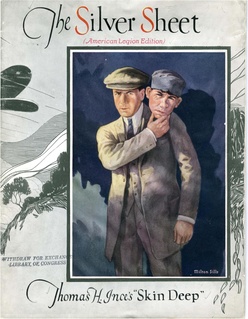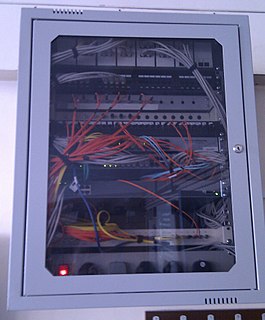Multimedia is content that uses a combination of different content forms such as text, audio, images, animations, video and interactive content. Multimedia contrasts with media that use only rudimentary computer displays such as text-only or traditional forms of printed or hand-produced material.

A pictogram, also called a pictogramme, pictograph, or simply picto, and in computer usage an icon, is an ideogram that conveys its meaning through its pictorial resemblance to a physical object. Pictographs are often used in writing and graphic systems in which the characters are to a considerable extent pictorial in appearance. A pictogram may also be used in subjects such as leisure, tourism, and geography.
The copyright law of the European Union consists of a number of directives, which the member states are obliged to enact into their national laws, and by the judgments of the European Court of Justice. Directives of the EU are passed to harmonise the laws of European Union member states. The most recent proposal is named Directive on Copyright in the Digital Single Market.

Mail art is a populist artistic movement centered on sending small scale works through the postal service. It initially developed out of what eventually became Ray Johnson's New York Correspondence School in the 1950s and the Fluxus movement in the 1960s, though it has since developed into a global movement that continues to the present.
Alternative media are media that differ from established or dominant types of media in terms of their content, production, or distribution. Alternative media take many forms including print, audio, video, Internet and street art. Some examples include the counter-culture zines of the 1960s, ethnic and indigenous media such as the First People's television network in Canada, and more recently online open publishing journalism sites such as Indymedia.
In graphic design and advertising, a comprehensive layout or comprehensive, usually shortened to comp, is the page layout of a proposed design as initially presented by the designer to a client, showing the relative positions of text and illustrations before the final content of those elements has been decided upon. The comp thus serves as a draft of the final layout, and is used as guide for further design changes and, ultimately, production.

Military communications or military signals involve all aspects of communications, or conveyance of information, by armed forces. Military communications span from pre-history to the present. The earliest military communications were delivered by runners. Later, communications progressed to visual and audible signals, and then advanced into the electronic age. Examples from Jane's Military Communications include text, audio, facsimile, tactical ground-based communications, terrestrial microwave, tropospheric scatter, naval, satellite communications systems and equipment, surveillance and signal analysis, encryption and security and direction-finding and jamming.

Communication Arts is the largest international trade journal of visual communications. Founded in 1959 by Richard Coyne and Robert Blanchard, the magazine's coverage includes graphic design, advertising, photography, illustration and interactive media. The magazine continues to be edited and published under the guidance of Coyne's wife Jean and their son Patrick Coyne. Currently, Communication Arts (CA) publishes six issues a year and hosts six creative competitions in graphic design, advertising, photography, illustration, typography and interactive media and two Web sites, commarts.com and creativehotlist.com

A house organ is a magazine or periodical published by a company or organization for its customers, employees, union members, parishioners, political party members, and so forth. This name derives from the use of "organ" as referring to a periodical for a special interest group.

Fiber-optic communication is a method of transmitting information from one place to another by sending pulses of light through an optical fiber. The light forms an electromagnetic carrier wave that is modulated to carry information. Fiber is preferred over electrical cabling when high bandwidth, long distance, or immunity to electromagnetic interference are required.

Print, A Quarterly Journal of the Graphic Arts was a limited edition quarterly periodical begun in 1940 and continued under different names through the end of 2017 as Print, a bimonthly American magazine about visual culture and design.

National Taiwan University of Arts is a university in Banqiao District, New Taipei, Taiwan. It is the oldest and most prestigious art college in Taiwan.

Radio is the technology of using radio waves to carry information, such as sound and images, by systematically modulating properties of electromagnetic energy waves transmitted through space, such as their amplitude, frequency, phase, or pulse width. When radio waves strike an electrical conductor, the oscillating fields induce an alternating current in the conductor. The information in the waves can be extracted and transformed back into its original form.

The Central Academy of Fine Arts or CAFA is an art academy managed by the Ministry of Education of China. The Manila Bulletin calls the school "China’s most prestigious and renowned art academy". It is considered one of the most selective schools in the country and turns away more than 90% of its applicants each year.

The European Data Relay System (EDRS) system is a European constellation of state of the art GEO satellites that relay information and data between satellites, spacecraft, UAVs, and ground stations. The designers intend the system to provide almost full-time communication, even with satellites in low Earth orbit that often have reduced visibility from ground stations. It makes on-demand data available to, for example, rescue workers who want near-real-time satellite data of a crisis region.
Culture jamming is a tactic used by many anti-consumerist social movements to disrupt or subvert media culture and its mainstream cultural institutions, including corporate advertising. It attempts to "expose the methods of domination" of a mass society to foster progressive change.

An exhibition, in the most general sense, is an organised presentation and display of a selection of items. In practice, exhibitions usually occur within a cultural or educational setting such as a museum, art gallery, park, library, exhibition hall, or World's fairs. Exhibitions can include many things such as art in both major museums and smaller galleries, interpretive exhibitions, natural history museums and history museums, and also varieties such as more commercially focused exhibitions and trade fairs.
Provisions related to Italian copyright law are found in Law no. 633 of 22 April 1941. Certain fundamental provisions are also found in the Italian Civil Code of 1942, Arts. 2575–2583.

The Jockey Club Creative Arts Centre is a multi-disciplinary arts centre in Shek Kip Mei, Hong Kong, housed in a converted nine-storey factory estate.














